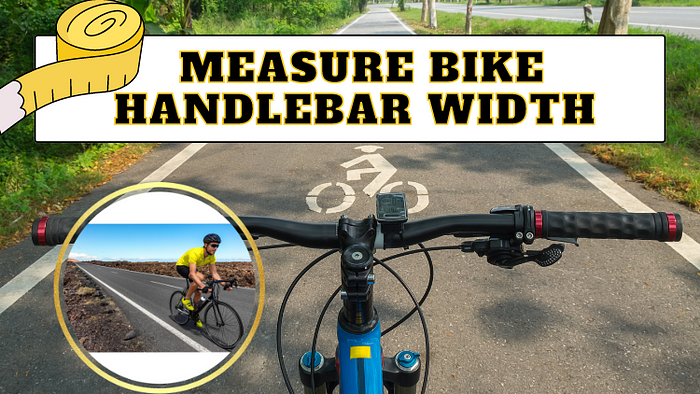Find Your Perfect Bike Handlebar Width: A Quick Guide
As a dedicated cycling enthusiast, I recently upgraded to a bike that I absolutely love. Now, I want to adjust the handlebars to the width that best suits me to ensure an optimal riding experience. The width of the handlebars plays a crucial role in bike handling and comfort, making it essential to understand how to measure and adjust them properly.

Why Handlebar Width Matters
Handlebar width significantly impacts bike control, stability, and comfort, especially during long rides. The right width enhances overall performance based on your body type, riding style, and riding environment. Different types of bikes — such as mountain bikes and road bikes — require different handlebar widths, so it’s important to choose accordingly.
How to Measure and Adjust Handlebar Width
Measuring Road Bike Handlebar Width:
Road bike handlebars are generally narrower to reduce wind resistance and increase speed. Follow these steps to measure them:
- Locate the Measuring Point: Identify the center of the curve on the road bike handlebar as your starting point.
- Mark the Center: Use a marker to make a small mark at the center of the curve to ensure accurate measurement.
- Measure the Width: Use a tape measure or caliper, starting from the marked center, and measure horizontally across to the center of the other curve. Ensure the measurement is level.
- Record and Choose Width: Note the measurement in millimeters. Choose a handlebar width that matches your shoulder width for better comfort.
Measuring Mountain Bike Handlebar Width:
Mountain bike handlebars are typically wider to provide better stability on rough terrain. Here’s how to measure them:
- Determine the Measuring Point: Start from one end of the handlebar.
- Mark the Start: Use a marker to make a small mark at the end of the handlebar for accuracy.
- Measure the Width: Align one end of the tape measure with the mark and extend it along the handlebar to the other end. Keep the tape measure flat against the handlebar.
- Record and Adjust: Write down the measurement in millimeters. Adjust the handlebar width according to personal preference and riding needs. Wider handlebars improve stability but may reduce maneuverability in tight spaces, while narrower handlebars enhance agility but might compromise control.
Finding the Right Handlebar Width
Choosing the right handlebar width involves considering your body type, riding style, and typical riding environment. For instance, if you have broad shoulders and a larger build, wider handlebars can provide better control and stability. Conversely, if you have narrower shoulders, a narrower handlebar may offer a more natural riding position.
Additionally, I adjust handlebar width based on the riding conditions. For technical mountain trails, I prefer wider handlebars for enhanced control. On city streets or in situations requiring quick maneuvering, narrower handlebars are more suitable.
Detailed screenshot guide please click here: Bike Handlebar Width.
Summary
Finding the ideal handlebar width requires practical adjustments based on riding experience. For me, cycling is an art where even minor adjustments can greatly affect performance and handling. Therefore, I approach handlebar width adjustments with care until I find the perfect setting that meets my needs.
By following these steps, I can accurately measure and adjust my handlebar width to ensure the best handling and comfort in every ride.
Comments
Post a Comment